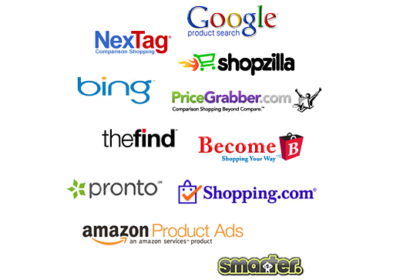
Many new comparison shopping vendors argue in favor of eliminating products from your feed that don’t perform well as the best way to improve your ROI. I say they couldn’t be any more wrong. Research from CMS shows 90% of consumer electronics customers online use comparison shopping yet I’ve found only 33% use it before making a purchase. 43% consider Comparison Shopping no different than spending time in the mall “Shopping”!
Ask yourself as a Marketer, do you treat Comparison Shopping like a direct demand generation program with aggressive ROI expectations or have your asked your customers how they use Comparison Shopping? In most cases, its an important part of their decision making process with as much as 20% starting with it before buying later on. Treat Comparison Shopping like your catalog, people shop, compare, and usually go to Search before making a purchase. If you aren’t optimizing your datafeeds for Comparison Shopping, you don’t exist.

I actually disagree with this entirely. Merchants — especially those in CE — simply cannot afford to post products that sell for under $80, when the CPC they pay averages $.75. Given that conversion rates are generalluy 4%, that means that a marketer spends $75 to make 4 sales, or almost $20 per sale. At $80/sale or less, that is at LEAST a 20% cost of sale, far higher than marketers are willing to bear.
Also, I don’t think that there is a question as to whether marketers use CSE’s as a DM vehicle: It IS a DM vehicle, period. There is no real brand-building opportunity inherent with comparison shopping, and that has really been proven.
So, marketers use the forum not as a way to consistently get in front of customers in the hope that they make a sale down the line somewhere. They use it to make a sale now. It’d be far too expensive otherwise.
Fair enough Paul and I don’t disagree with you on the math; just the approach. Your website is brand marketing; a person who has seen it is of greater value to you, whether they’ve purchased or not, than the one who is unaware of you. That person now knows what you sell, they might refer a friend, they might have only been browsing now for a later purchase, perhaps they signed up for a newsletter.
I don’t mean to suggest that those who look at CSEs as only a direct marketing vehicle are doing the math wrong; only that they are missing the opportunity to value that traffic with comprehensive analytics. You defined my counterpoint exactly, “they use it to make a sale NOW”
The point I tried to make more simply is that you spend money on a print catalog so that people can browse your products. Most of those people then call, search Google, or visit the site directly when making a purchase. Most attribute the sale to the direct source; yet the industry still pays for catalogs. CSEs, in many ways, have the same impact.
In defense of your point, CE (computers and electronics) are a poor industry for this debate. I certainly favor your perspective more in that case. But when I shop for jewelry, furnishings, furniture, appliances, or even apparel, the first place I turn is a comparison shopping engine to see whom sells what and at what price. More often than not, I then go to a store to make such a purchase. Whether or not I shop with you was largely, almost exclusively, determined by who I met through a CSE.